SNOSD52B August 2018 – January 2020 TLV1805-Q1
PRODUCTION DATA.
- 1 Features
- 2 Applications
- 3 Description
- 4 Revision History
- 5 Pin Configuration and Functions
- 6 Specifications
- 7 Detailed Description
-
8 Application and Implementation
- 8.1 Application Information
- 8.2 Typical Applications
- 9 Power Supply Recommendations
- 10Layout
- 11Device and Documentation Support
- 12Mechanical, Packaging, and Orderable Information
6.7 Typical Characteristics
at TA = 25°C, VS = 12 V, VCM = VS/2, and input overdrive = 100 mV (unless otherwise noted)


A.
Figure 7. Supply Current vs. Supply Voltage, Output Low | VCM = V- | Output Low (VID = -0.1 V) | |


| TA = 25 °C |

| VCM = V- |




| VSD = 5 V |

| ISINK = 1 mA |

| VS = 3.3 V |
at 3.3V

| VS = 12 V |
at 12V

| VS = 40 V |
at 40V



| VS = 3.3 V | CL = 15pF |
at 3.3V

| VS = 5 V | CL = 15pF |
at 5V

| VS = 12 V | CL = 15pF |
Overdrive at 12V

| VS = 40 V | CL = 15pF |
at 40V

| VS = 3.3 V | CL = 4nF |
at 3.3V

| VS = 5 V | CL = 4nF |
at 5V

| VS = 12 V | CL = 4nF |
Overdrive at 12V

| VS = 40 V | CL = 4nF |
at 40V
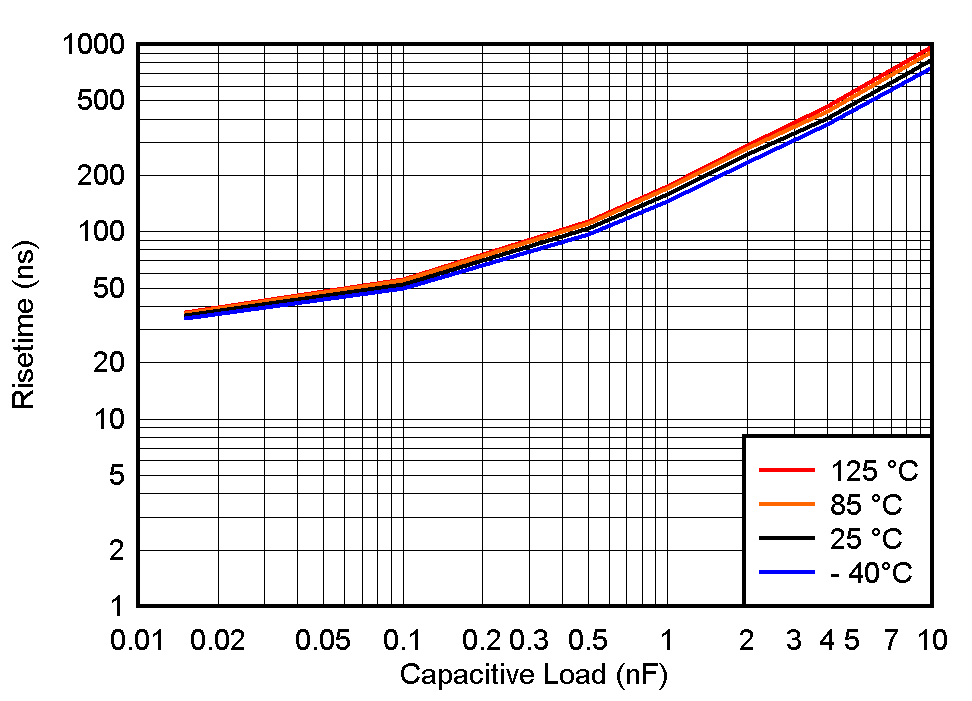
| VS = 3.3 V |
at 3.3V

| VS = 5 V |
at 5V
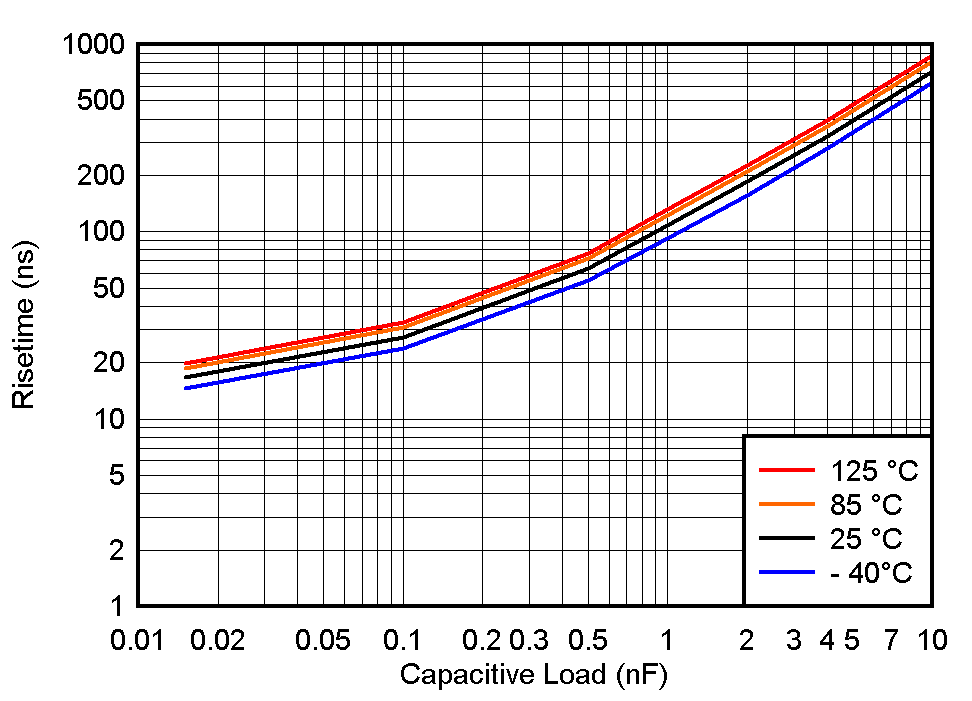
| VS = 12 V |
at 12V

| VS = 40 V |
at 40V


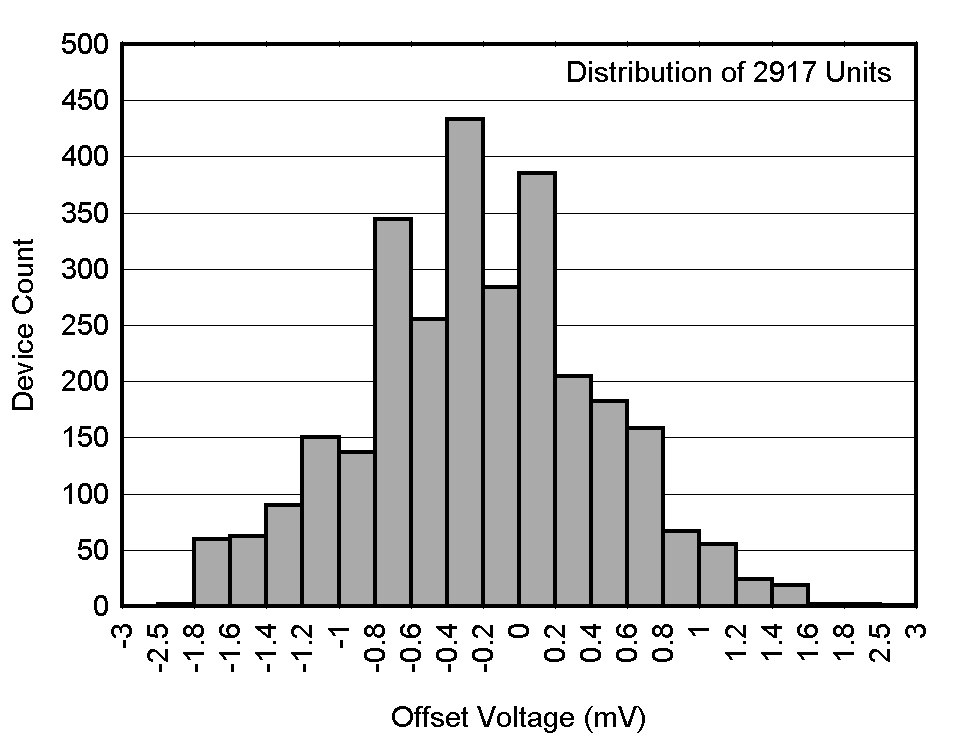


| VCM = V- | Output High (VID = 0.1 V) | |

| TA = 125 °C |

| TA = -40 °C |

A.
Figure 14. Shutdown Supply Current vs. Supply Votlage | VCM = V- |




| DBV SOT-23-6 Package |

| VS = 3.3 V |
at 3.3V

| VS = 12 V |
at 12V
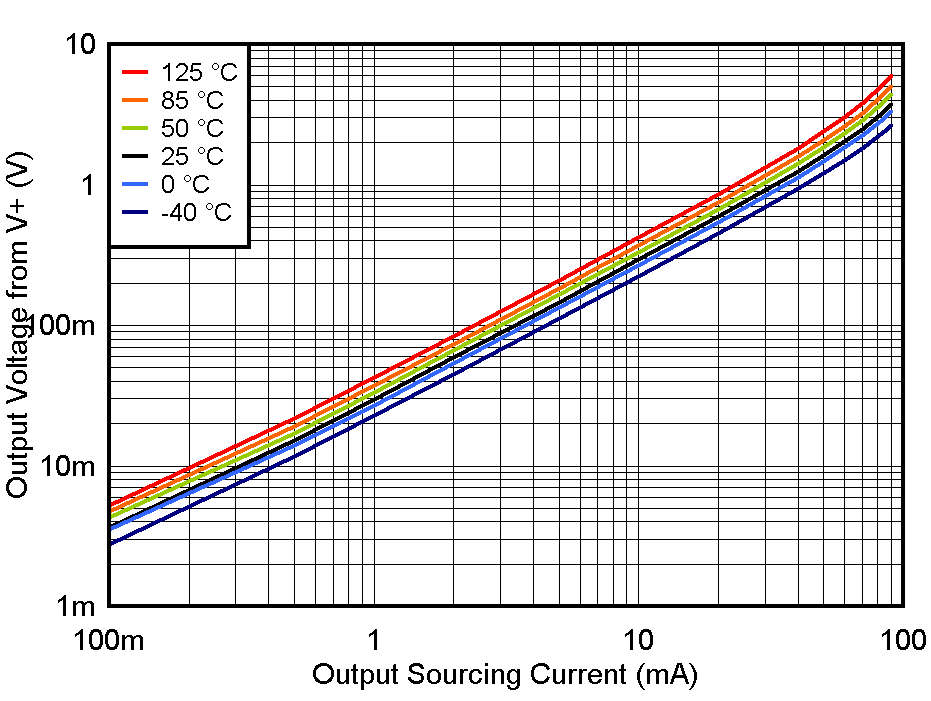
| VS = 40 V |
at 40V


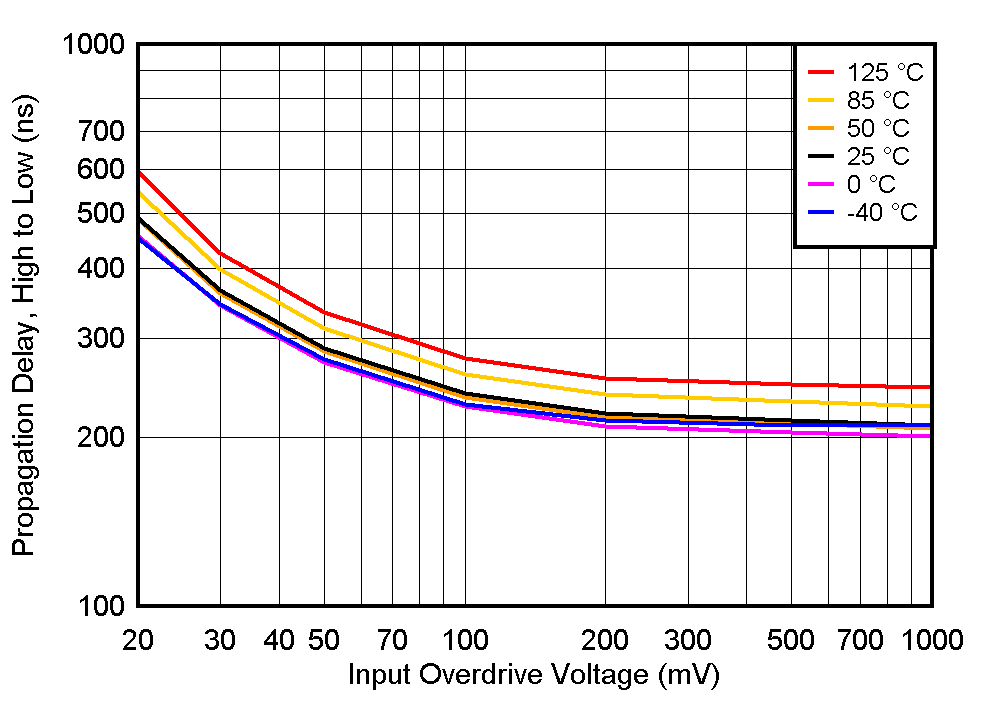
| VS = 3.3 V | CL = 15pF |
at 3.3V

| VS = 5 V | CL = 15pF |
at 5V

| VS = 12 V | CL = 15pF |
at 12V

| VS = 40 V | CL = 15pF |
at 40V

| VS = 3.3 V | CL = 4nF |
at 3.3V

| VS = 5 V | CL = 4nF |
at 5V

| VS = 12 V | CL = 4nF |
at 12V

| VS = 40 V | CL = 4nF |
at 40V

| VS = 3.3 V |
at 3.3V

| VS = 5 V |
at 5V

| VS = 12 V |
at 12V

| VS = 40 V |
at 40V


